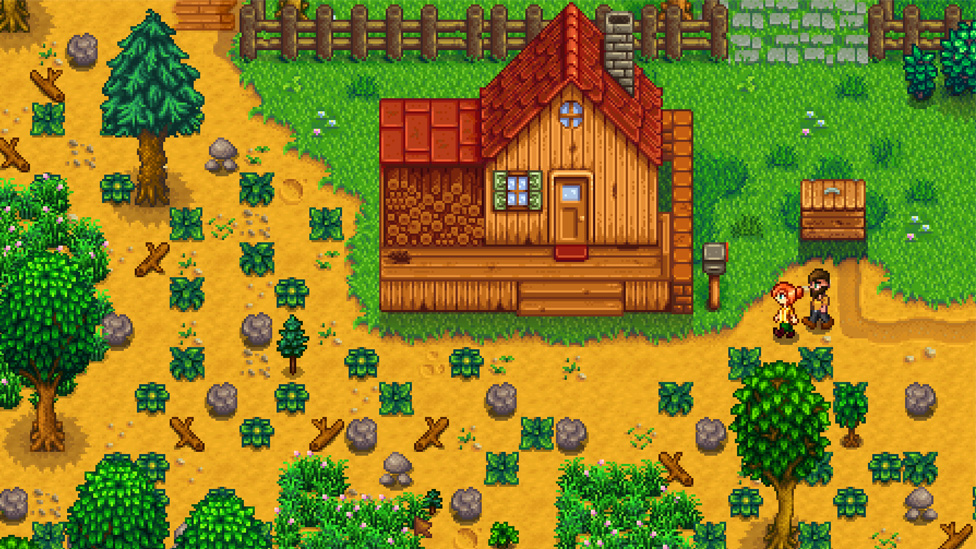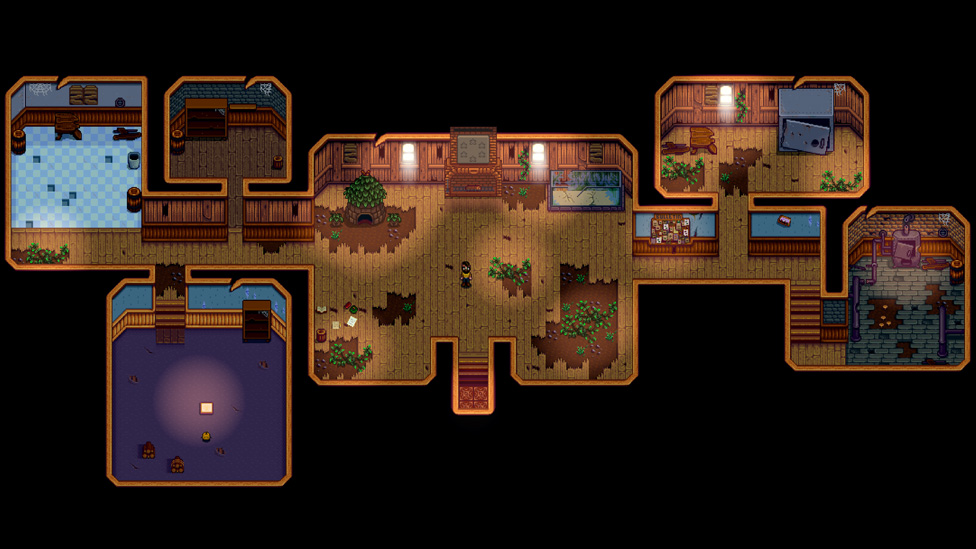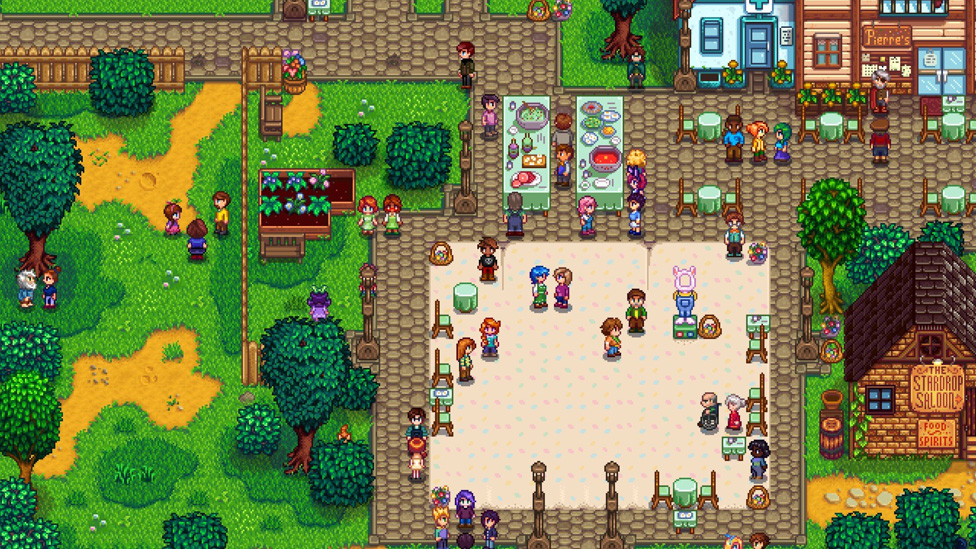Beginner Mistakes to Avoid in Stardew Valley
Stardew Valley is a charming and immersive farming simulation game that has captivated the hearts of many players worldwide. As a new player, it's easy to get caught up in the excitement of building your dream farm, exploring the mines, and forming relationships with the villagers. However, with so many activities and tasks to manage, beginners often make common mistakes that can hinder their progress and enjoyment. To help you get started on the right foot, here are some crucial beginner mistakes to avoid in Stardew Valley.

Neglecting to Plan Your Farm Layout
One of the most critical aspects of Stardew Valley is designing an efficient and functional farm layout. Many beginners make the mistake of planting crops and placing buildings haphazardly, which can lead to wasted time and effort. Here’s how to avoid this mistake:
Ignoring the Importance of Energy Management
Energy is a crucial resource in Stardew Valley, and managing it effectively is essential for maximizing your productivity each day. Beginners often underestimate how quickly energy can be depleted, leading to unproductive days. Here’s how to manage your energy wisely:
Failing to Build Relationships with Villagers
Building relationships with the villagers of Pelican Town is a vital part of Stardew Valley. Many new players focus solely on farming and neglect social interactions, missing out on valuable rewards and storylines. Here’s how to avoid this mistake:
Overlooking the Community Center Bundles

The Community Center is a central feature of Stardew Valley, and completing its bundles is crucial for unlocking new areas and improving your farm. Beginners often overlook this aspect, delaying their progress. Here’s how to stay on top of Community Center bundles:
Mismanaging Finances
Proper financial management is essential for success in Stardew Valley. Many beginners spend their money impulsively, leading to financial struggles later on. Here’s how to manage your finances effectively:
Ignoring Seasonal Changes
Each season in Stardew Valley brings different crops, fish, and forageable items. Ignoring these changes can lead to missed opportunities and wasted resources. Here’s how to adapt to seasonal changes:
Neglecting Tool Upgrades
Upgrading your tools is essential for increasing efficiency and productivity on your farm. Beginners often neglect tool upgrades, which can slow down their progress. Here’s how to prioritize tool upgrades:
Overwatering Crops
While it's crucial to keep your crops well-watered, overwatering or inefficient watering practices can waste valuable time and energy. Here’s how to water your crops effectively:
Neglecting to Check the TV
The TV in your farmhouse provides essential information and tips that can greatly benefit your gameplay. Many beginners overlook this valuable resource. Make it a habit to check the TV daily for:
Missing Out on Festivals

Festivals are a fun and rewarding part of Stardew Valley. They provide opportunities to interact with villagers, participate in unique activities, and earn exclusive rewards. Here are some key festivals to participate in:
Participating in these festivals will enhance your experience and provide valuable items and relationship boosts.
By avoiding these common beginner mistakes and implementing the tips provided, you’ll be well on your way to creating a thriving and successful farm in Stardew Valley. Remember to plan your activities, manage resources wisely, and engage with the community to make the most out of your farming adventure.

Make Your Own Stardew Valley Server
Neglecting to Plan Your Farm Layout
One of the most critical aspects of Stardew Valley is designing an efficient and functional farm layout. Many beginners make the mistake of planting crops and placing buildings haphazardly, which can lead to wasted time and effort. Here’s how to avoid this mistake:- Map Out Your Farm: Take some time to plan where you want to place your crops, buildings, and pathways. This will help you maximize space and make your farm more manageable.
- Prioritize Accessibility: Ensure that your crops and buildings are easily accessible. Place pathways between crop fields and buildings to minimize walking time.
- Consider Future Expansions: Leave space for future buildings and expansions. As you progress, you'll need more space for additional crops, animals, and equipment.
Ignoring the Importance of Energy Management
Energy is a crucial resource in Stardew Valley, and managing it effectively is essential for maximizing your productivity each day. Beginners often underestimate how quickly energy can be depleted, leading to unproductive days. Here’s how to manage your energy wisely:- Monitor Your Energy Levels: Keep an eye on your energy bar and take breaks to restore energy when needed. Eating food and using the spa are great ways to replenish energy.
- Upgrade Tools: Upgrading your tools at Clint’s Blacksmith shop will make tasks more efficient and save energy.
- Avoid Overexertion: Going to bed with low energy levels will result in a reduced energy bar the next day. Try to finish your tasks and get to bed on time.
Failing to Build Relationships with Villagers
Building relationships with the villagers of Pelican Town is a vital part of Stardew Valley. Many new players focus solely on farming and neglect social interactions, missing out on valuable rewards and storylines. Here’s how to avoid this mistake:- Interact Daily: Make it a habit to talk to villagers every day. This helps build rapport and unlocks new dialogue options.
- Give Gifts: Giving gifts that villagers like or love significantly boosts your friendship levels. Pay attention to each villager's preferences.
- Complete Quests: Villagers often request help through the bulletin board. Completing these quests improves your relationships and provides useful rewards.
Overlooking the Community Center Bundles

The Community Center is a central feature of Stardew Valley, and completing its bundles is crucial for unlocking new areas and improving your farm. Beginners often overlook this aspect, delaying their progress. Here’s how to stay on top of Community Center bundles:
- Track Bundle Requirements: Familiarize yourself with the items needed for each bundle. Keep these items in chests until you can deliver them.
- Prioritize Seasonal Items: Some bundles require seasonal items that are only available for a limited time. Focus on collecting these items as soon as they become available.
- Fishing and Foraging: Many bundles require fish and forageable items. Spend time fishing and foraging each season to gather these items.
Mismanaging Finances
Proper financial management is essential for success in Stardew Valley. Many beginners spend their money impulsively, leading to financial struggles later on. Here’s how to manage your finances effectively:- Prioritize Investments: Invest in crops and animals that offer high returns. Focus on profitable crops like strawberries, blueberries, and cranberries.
- Save for Upgrades: Save money for important upgrades like tool enhancements, new buildings, and seeds for the next season.
- Avoid Unnecessary Purchases: Be mindful of your spending and avoid buying items that you don't need immediately.
Ignoring Seasonal Changes
Each season in Stardew Valley brings different crops, fish, and forageable items. Ignoring these changes can lead to missed opportunities and wasted resources. Here’s how to adapt to seasonal changes:- Plan Ahead: Prepare for the upcoming season by purchasing seeds and planning your crop layout in advance.
- Rotate Crops: Plant crops that are best suited for each season to maximize your profits and ensure a steady income.
- Store Seasonal Items: Keep a stock of seasonal items for future Community Center bundles and cooking recipes.
Neglecting Tool Upgrades
Upgrading your tools is essential for increasing efficiency and productivity on your farm. Beginners often neglect tool upgrades, which can slow down their progress. Here’s how to prioritize tool upgrades:- Upgrade the Pickaxe First: A better pickaxe makes mining easier and more efficient, allowing you to gather resources quickly.
- Upgrade the Hoe and Watering Can: These upgrades will save you time and energy when planting and watering crops.
- Plan Upgrades Strategically: Upgrade your tools during the winter season when farming activities are reduced, and you can focus on mining and other tasks.
Overwatering Crops
While it's crucial to keep your crops well-watered, overwatering or inefficient watering practices can waste valuable time and energy. Here’s how to water your crops effectively:- Use Sprinklers: Invest in sprinklers to automate the watering process. This saves time and ensures that your crops are consistently watered.
- Upgrade Your Watering Can: An upgraded watering can covers more tiles at once, making the process quicker.
- Plan Your Layout: Arrange your crops in a way that maximizes the efficiency of your watering can or sprinkler system.
Neglecting to Check the TV
The TV in your farmhouse provides essential information and tips that can greatly benefit your gameplay. Many beginners overlook this valuable resource. Make it a habit to check the TV daily for:- Weather Report: Knowing the weather forecast helps you plan your activities for the day.
- Fortune Teller: The fortune teller provides insights into your luck for the day, which can influence activities like mining and fishing.
- Living Off the Land: This show offers useful farming tips and tricks.
- Queen of Sauce: Learn new cooking recipes that can provide significant energy boosts.
Missing Out on Festivals

Festivals are a fun and rewarding part of Stardew Valley. They provide opportunities to interact with villagers, participate in unique activities, and earn exclusive rewards. Here are some key festivals to participate in:
| Festival | Date | Activities |
|---|---|---|
| Egg Festival | 13th Spring | Egg hunt, purchase Strawberry seeds |
| Flower Dance | 24th Spring | Dance with a partner, build relationships |
| Luau | 11th Summer | Contribute to the communal potluck |
| Stardew Valley Fair | 16th Fall | Display your best produce and win prizes |
Participating in these festivals will enhance your experience and provide valuable items and relationship boosts.
Summary Questions
Why is planning your farm layout important in Stardew Valley?
Planning your farm layout ensures efficient use of space, reduces wasted time, and helps in managing your farm more effectively.
How can you manage energy effectively in Stardew Valley?
Monitor energy levels, take breaks to restore energy, upgrade tools for efficiency, and avoid overexertion to maintain productivity.
What are the benefits of building relationships with villagers in Stardew Valley?
Building relationships unlocks new dialogue, quests, and rewards, enhancing the game experience and providing valuable items and storylines.
How does completing Community Center bundles impact your progress?
Completing bundles unlocks new areas, provides rewards, and significantly improves your farm’s capabilities and overall game progression.
By avoiding these common beginner mistakes and implementing the tips provided, you’ll be well on your way to creating a thriving and successful farm in Stardew Valley. Remember to plan your activities, manage resources wisely, and engage with the community to make the most out of your farming adventure.
Make Your Own Stardew Valley Server
Copyright 2019-2025 © ScalaCube - All Rights Reserved.